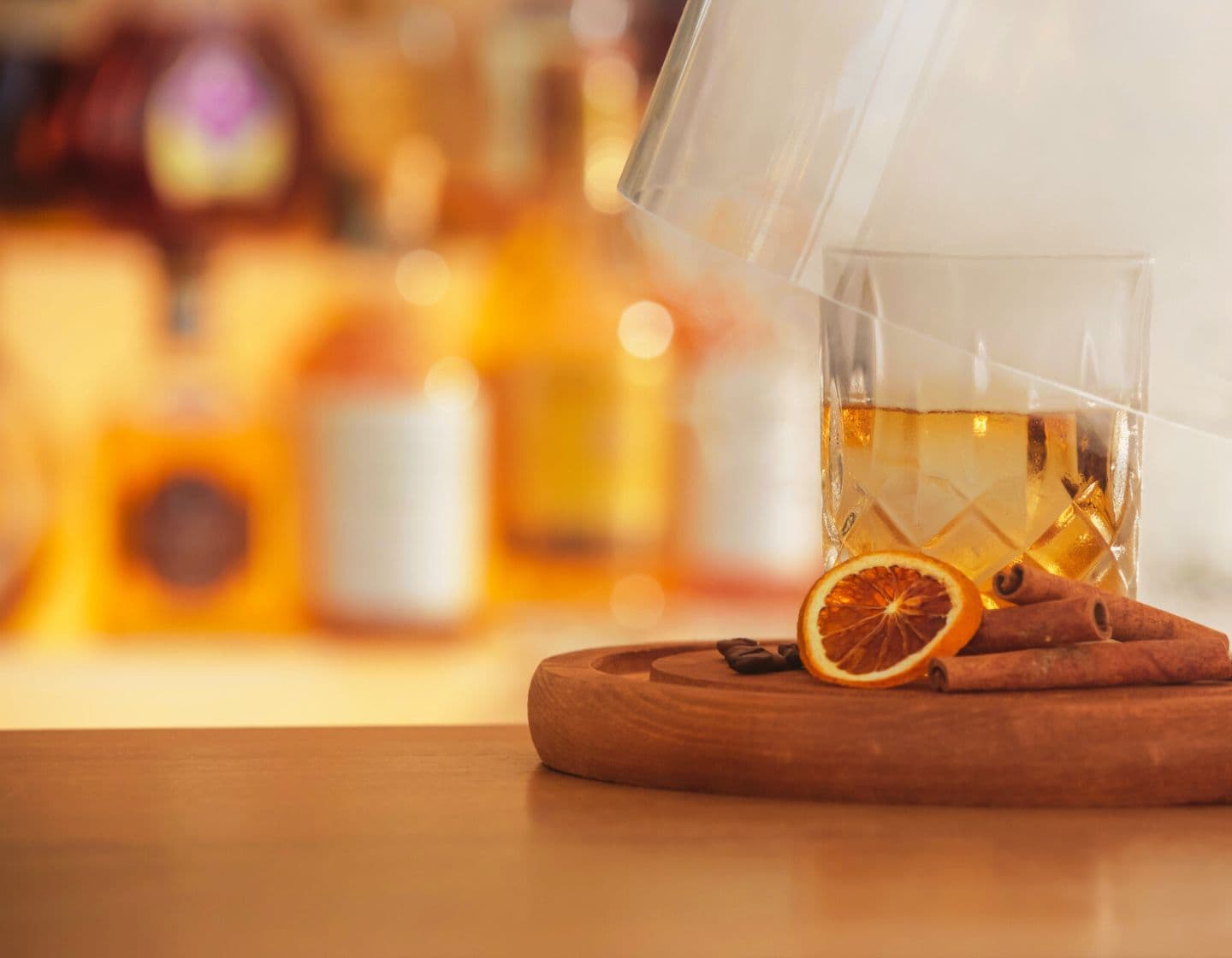Blogs & Inspiration
4D Sensory Cocktails
Discover how to build amazing 4D cocktails that excite all your guest’s senses.
Authors: Thomas Aske, Co-Owner of Award-Winning Black Rock Whisky Bar; Terry Cashman, Bartender & Drinks Strategist at Sweet&Chilli
Estimated reading time: 5 minutes
With insight from sensory cocktail creator Thomas Aske, and drinks strategist Terry Cashman, learn exactly what a 4D cocktail is and how to create an all-round experience that will wow your guests.
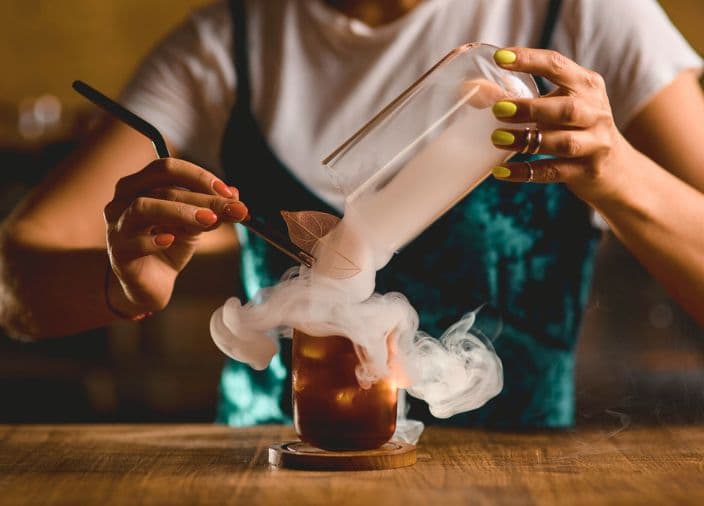
What are 4D Cocktails?
Also known as sensory cocktails or multi-sensory cocktails, 4D cocktails are serves that stimulate all five of your guest’s senses to create a memorable experience.
Whilst you can’t ignore the importance of taste, studies suggest that it might not even be the most important sense when it comes to a cocktail. 4D cocktails typically enhance elements such as:
- Colour – The colour of a drink and its garnish(es).
- Aroma – The smell of a drink.
- Touch – The texture and feel of the glass.
- Sound – The cracking of ice or fizzing of the liquid.
CELEBRATING THE SENSES
Experienced mixologists will always think about how they can tap into all their guest's senses when building a new cocktail. Consider how to engage your customers' other senses – sight, sound, smell and touch - as well as taste, to create memorable guest experiences.
Watch Now: Creating a Sensory Cocktail Experience
In this video, bar manager and mixologist Emanuele Balestra shares some quick and easy tips to add exciting, new dimensions to your drinks.
COCKTAILS FOR ALL THE SENSES
To make a 4D cocktail that captivates your guests, you must consider all five senses.
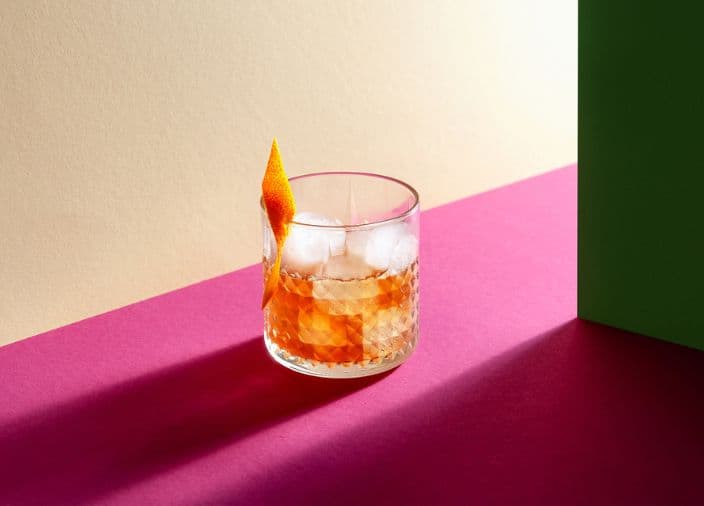
1. Taste
To make a world-class 4D quality cocktail, taste is still hugely important and something that you shouldn't overlook.
Many inexperienced mixologists make the mistake of adding intense aromas, sounds, or visuals to their drinks without thinking about the impact on the flavour.
Taste is always at the core of your cocktail, so to make sure the flavours are just as amazing as the rest of your serve, try to:
- Balance the cocktail with the golden ratio (2:1:1)
- Focus on showcasing a single flavour.
- Explore acids and salinity in your drink.
- Conduct a taste test with your team to find winning recipe.
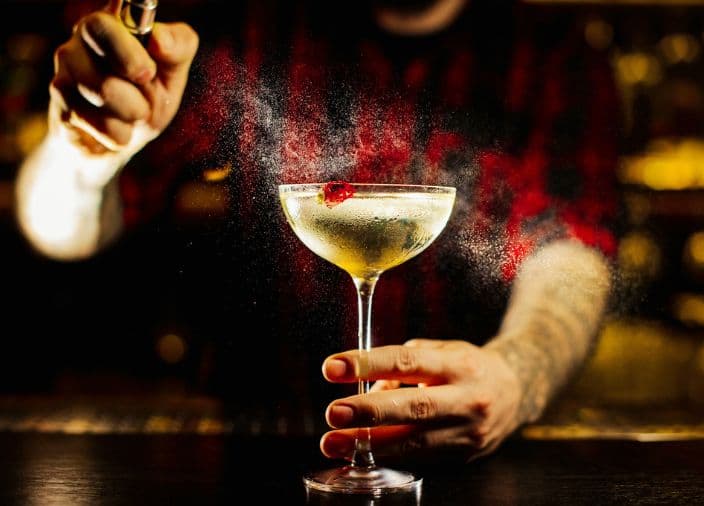
2. Aroma
Smell is connected to memory and emotion, so if you want your drink to leave a lasting impression, adding fragrance or aromas can help you do that.
Smoking your cocktail or roasting a herby garnish can add a warming, complex scent. This also adds a visual element and can subtly alter the overall flavour profile of your serve.
You can also add scent with fragranced sprays to top your cocktails, which works great if you want a more delicate floral experience.
Also, consider the overall smell of your whole venue. If you're using oil diffusers or incense, make sure the scent complements the cocktails on your menu.

3. Touch
The glassware you use for your cocktails can be a clever way to add more complexity to your 4D cocktail serves. The texture and feel of your glass can influence how your guests interpret the drink.
A smooth glass suits crisp, refreshing drinks, while textured glasses add more showmanship to the serve. Plus, the size and shape of your glass play a massive role, too.
The same drink will feel and taste differently depending on the glass it's served in.
For example, a rocks glass will help add warmth and depth to your drink, as the drink will be slightly heated by the guest's hand. In contrast, a stemmed glass will help keep your drinks cool, heightening sweetness.
Play around with your glassware to find the perfect fit.
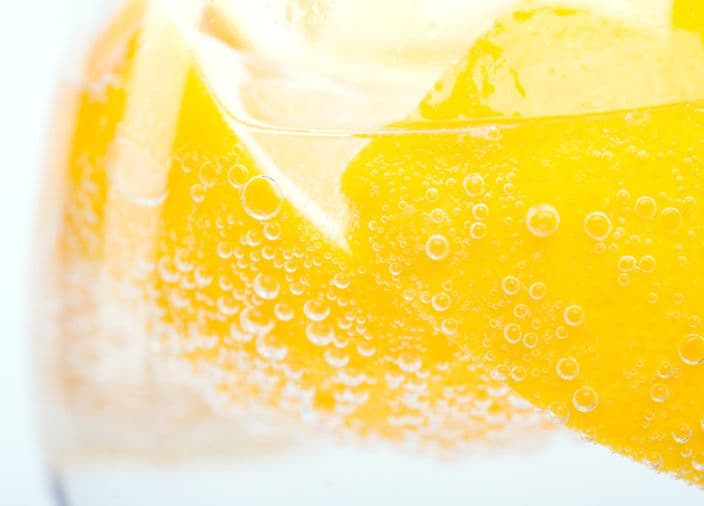
4. Sound
Sound is a powerful sense that can influence your guests’ mood, so be conscious of your venue's audio landscape.
When building a 4D cocktail, consider adding a nice fizz to the drink (think of it as a cat's purr) or a satisfying clink of ice against glass as the guest sips. These audio experiences improve the overall experience.
The wider environment also makes a difference to the quality of your cocktails. Think about the music you're playing and the acoustics of the venue. Too little decor can allow sounds to reverberate, causing a cocktail shaker behind the bar to cut into the venue's soundscape.
To accompany elegant cocktails, consider some nu jazz or deep house playlists, and for a more upbeat feel, go for funk or low-fi dance. You could also opt for 70s and 80s rock if you're looking for a renegade vibe. As long as it suits your bar’s identity, and your music choice feels right to you.
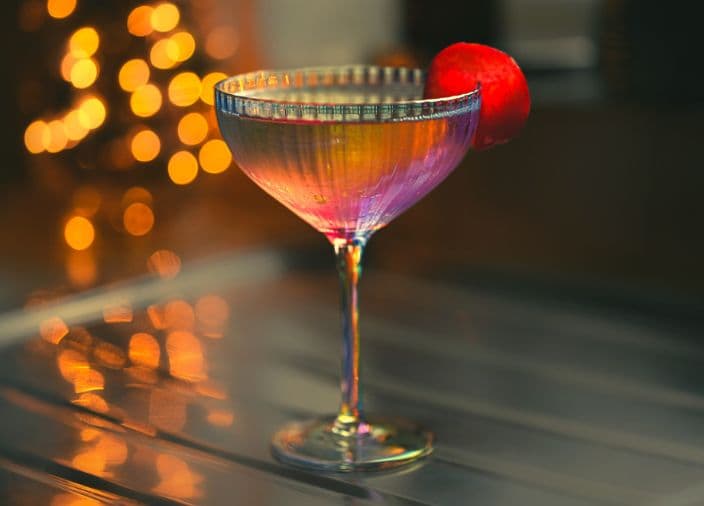
5. Sight
The visuals of your cocktail play a massive part in the 4D experience. The colours of your drink can tell you a lot about its taste, with richer colours suggesting a deeper, more enjoyable tasting experience.
When experimenting with sight, set up your venue to enhance the looks of your drinks.
Find the right lighting balance to allow your drinks to pop. Small table lights can help drinks stand out once served, and mellow background lighting can help create a relaxed atmosphere, helping guests enjoy their drinks more.
Key Takeaways
- 4D or sensory cocktails stimulate all the senses to create exciting, more memorable serves.
- To build excellent 4D cocktails, add elements that enhance taste, sight, smell, touch, and sound.
- Your venue can add to the experience of your cocktail, too. The smell, lighting, and playlist used in your bar can impact the overall cocktail experience.
- Thinking about your cocktails in 4D is a great way to give your guests the wow factor.
Loved this article? Become a member of Diageo Bar Academy and discover more top tips on how to turn everyday serves into showstoppers for free today.
